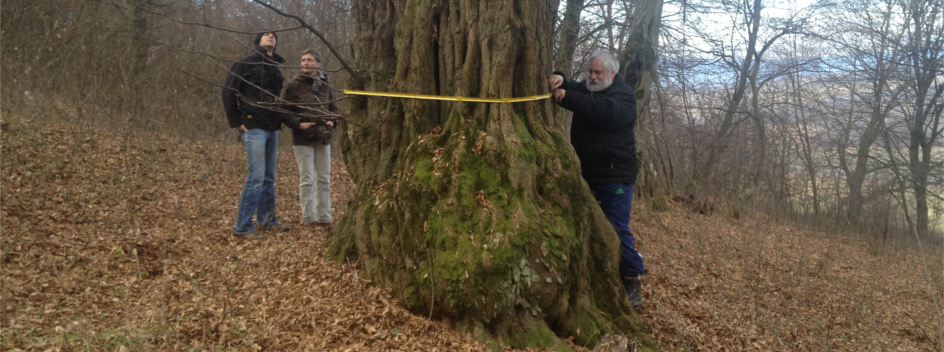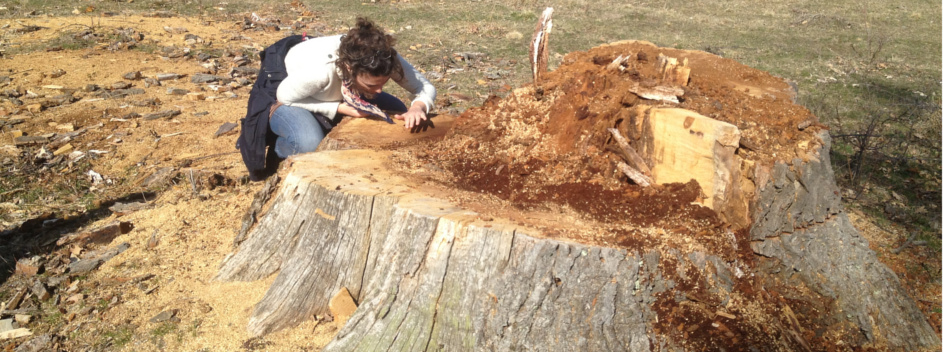Information we request about the trees and yourself
The goal of our initiative is to involve citizens in collecting information about the remarkable trees of Romania. Your involvement therefore is very important. Whenever you are out, if you see an old tree (healthy or damaged, alive or dead, or even large trunks or stumps left after cutting) please think about us: take a picture and share it on this website. Please share whatever information you have about their location, species, condition, size, interesting stories about the trees, cultural or local knowledge associated with trees. Or write a few words about why you think the tree is important to you or the people around it.
Details about how to measure trees and what defines a remarkable tree can be found on these pages.
To register a tree, you should create an account in the web platform. Your registration will be done only once, and you will receive a user name and password, so that you can revisit the site using these details.
We request five categories of information about the trees:
I. The trees. This includes the size, the species, the location (GPS coordinates) and a representative picture. The picture of the tree is important as it can help us (and others) to see the remarkable tree.
II. The tree condition. This information is very important both from the perspective of the ecological values as well as from the perspective of human impact and vulnerability.
III. Signs of human management. Many trees bear the signs of past (or current) human management. These are so called ‘working trees’. Typical interventions in Romania are the coppicing and pollarding. Coppicing means cutting the stem from the level of the ground while pollarding means the same intervention but at higher levels on the trunk.
IV. Location of the tree. Location can mean different vulnerabilities but at the same time can represent various opportunities to make the tree popular and protect it.
V. Your personal feelings about the tree: why the tree is important for you or, why you see this tree important? Here we are interested in your personal, subjective opinion about the tree you record. These pieces of information will be extremely useful for analyzing the potential aesthetic and cultural values of the trees.
How to measure a tree
Measuring the trees is a central activity for this initiative. The simplest measure of the size is the trunk circumference (girth) in cm. This is generally done at a height of 130 cm. Often the trunk contains a tumor or it is bifurcated at this height. In such cases we recommend the measurement below the tumor and/or the bifurcation. The three pictures illustrate ways of measuring the trees.



What is a remarkable tree
We consider a tree remarkable based on its age / size / shape. In the ideal case a remarkable tree is special in all of these three areas. If one is missing (let’s say it’s not very beautiful) the two other features should be stronger (really old and “fat”). If only one applies, that tree should really be extraordinary (not very beautiful nor fat, but very old).
We would like that this database is not filled up with any interesting tree, but we encourage you to choose truly remarkable ones! When a tree can be considered remarkable is different for every species. Therefore we invite you to use your own judgement in comparing trees and please upload to this database just the “top end” of what you believe is remarkable.
‘Large’ can have various meanings, depending on the species and environment of the tree. An English oak of 250 cm girth would be still a ‘teenager’. Old oaks can reach more than 1000 years old and a girth of 900 cm or more. But for a silver birch a trunk size of 250 cm would be indeed remarkable. A 300 cm trunk circumference would be remarkable for most trees.
List of tree species
The list of tree species we presented at the registration presents the common native and exotic trees which can be likely found during your trips in nature, parks or localities. Sometimes species are closely related and cannot be easily distinguished. For the cases when the species level identification of the trees is difficult, we added the option „unidentified species”. Such multi-species genera are e.g. the pine, willows, poplars, birch, oaks, elm. Therefore, for example, if you identified a poplar with 800+ cm girth, but you are unsure about the exact species, we would be very happy and grateful if you would upload that record simply under the option „Poplar (unidentified species)”. We also created the option „other species” for trees which are not listed.
We may modify the list of trees (e.g. by adding more trees and also shrubs) after the experience learned from the first 1000 tree records!
About Location Services
How fast can I get the location result?
- The GPS can take a significant amount of time to warm up and start delivering high accuracy results.
- Ensure that the device has a clear and uninterrupted view of the sky. GPS’s listen for a very weak signal from multiple satellites. These signals can be partially or completely blocked by buildings, thick foliage, vehicle roofs, etc
How accurate is?
- This is the million dollar question, right? When using enableHighAccuracy() on a phone where all the appropriate permissions have been selected and granted, accuracy is as low as 3 meters (~10 feet) that were obtained within 10 – 30 seconds of kicking off the geolocation functionality. This could be excellent for most consumer and retail applications.
- You should be aware that like any location-based functionality you will get spurious (abnormal) results that fall way outside the norm, and sometimes these results are wildly wrong.
Please be aware of the followings
- Internet connectivity strength: if you have a poor internet connection and no Wifi, then the browser’s requests to the location service can be delayed, blocked or even interrupted.
- Battery life management: keep in mind that the GPS takes a lot of power, so don't leave it enabled unless it is necessary.








